Nature is filled with fascinating behaviors, and one of the most charming garden phenomena is the way Morning Glories (Ipomoea spp.) unfurl their vivid, trumpet-shaped blooms with the rising sun, only to close as the day progresses. Gardeners and nature lovers alike have long admired this ritual, but few know exactly why it happens.
In this comprehensive guide, we’ll explore the science, botany, and environmental factors behind this beautiful floral habit. You’ll discover how light, temperature, and plant biology work together to dictate when Morning Glories open and close their flowers — and what purpose it serves in nature.
What Are Morning Glories?
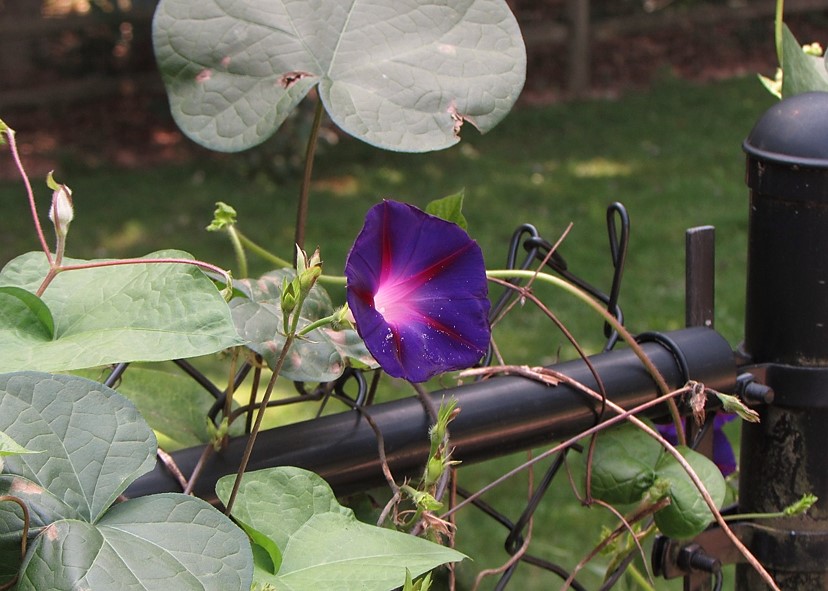
Morning Glories are fast-growing, twining annual or perennial vines native to tropical and subtropical regions around the world. Known for their lush, heart-shaped leaves and trumpet-like flowers in shades of blue, purple, pink, white, and red, these ornamental climbers are cherished in gardens for their rapid growth and prolific, colorful blooms.
Some of the most common species include:
- Ipomoea purpurea (Common Morning Glory)
- Ipomoea tricolor (‘Heavenly Blue’)
- Ipomoea nil (Japanese Morning Glory)
- Ipomoea indica (Blue Dawn Flower)
The name Morning Glory itself stems from the plant’s unique habit of opening its flowers at dawn and closing by afternoon.
The Science Behind Flower Opening and Closing
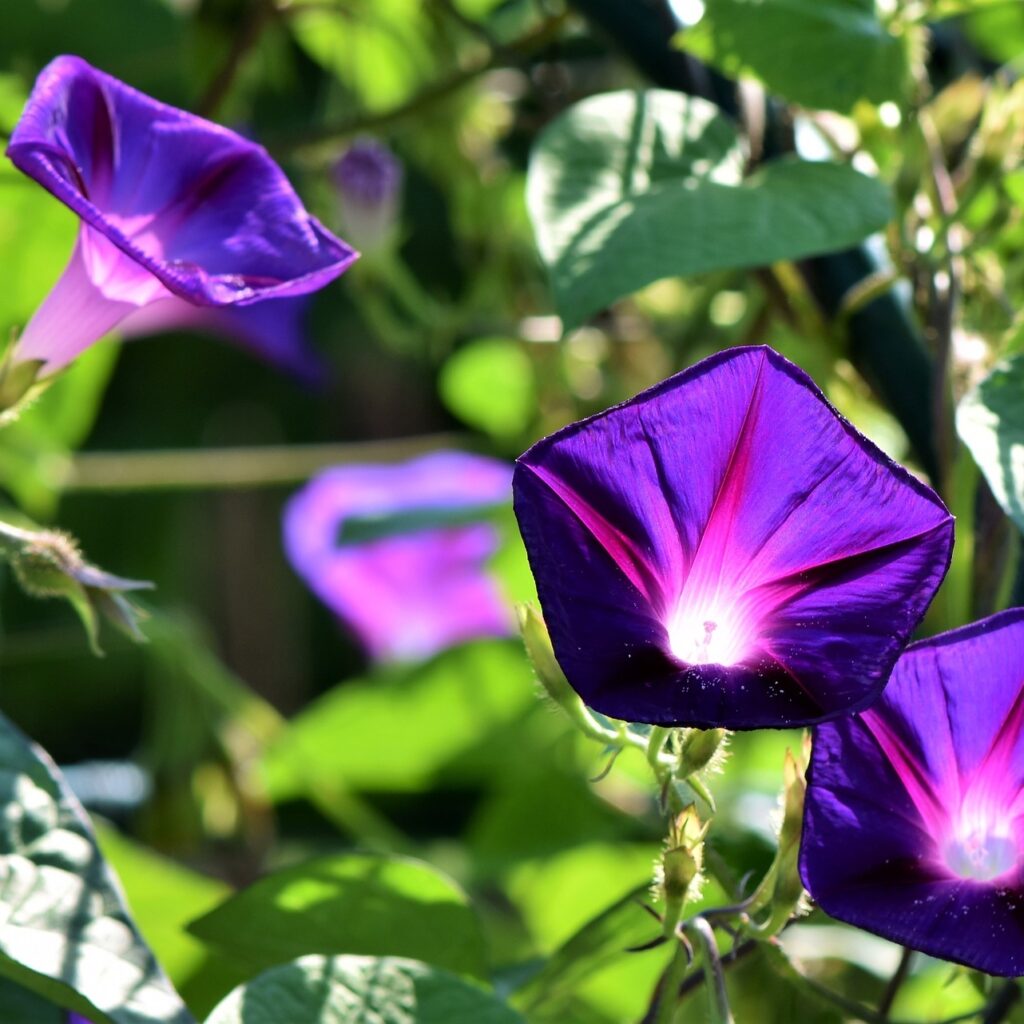
To understand why Morning Glories only open in the morning, we need to delve into a phenomenon known as nyctinasty — a type of plant movement in response to changes in light and temperature within a 24-hour cycle.
Nyctinasty is a rhythmic movement where plant organs like flowers or leaves open and close based on environmental cues such as light and darkness. Morning Glories display this through their diurnal blooming pattern — opening at dawn and closing by midday.
How Do Morning Glories Sense the Time of Day?
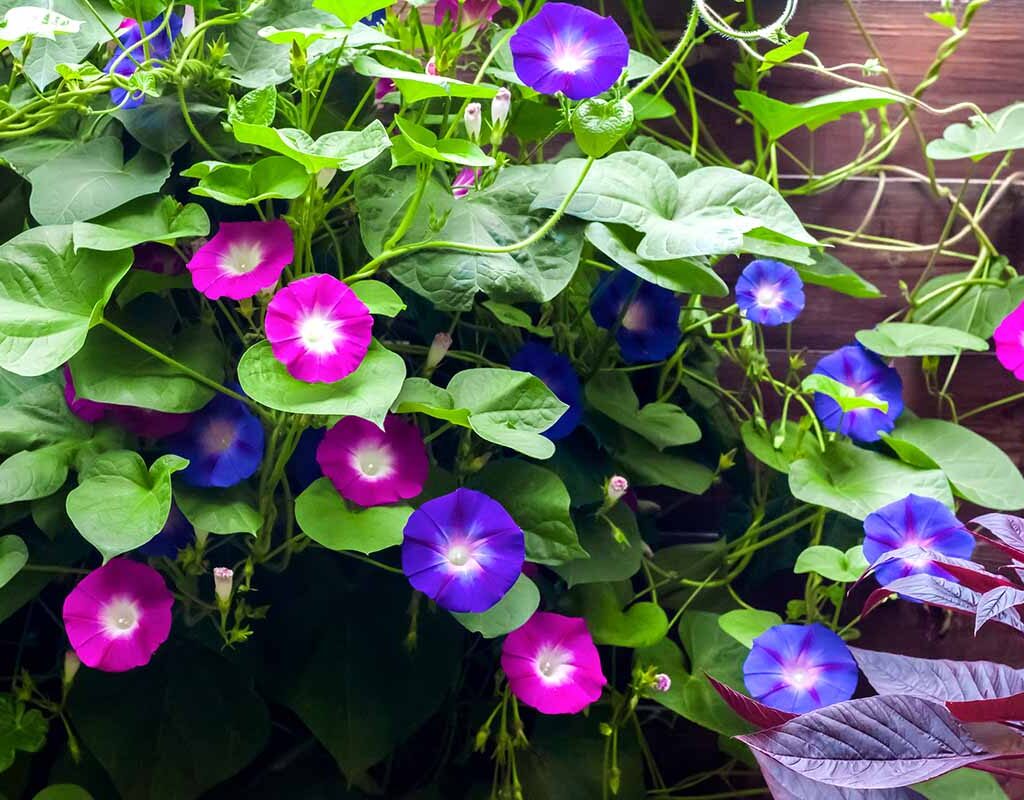
Morning Glories, like many other plants, possess internal biological clocks, known as circadian rhythms, which help regulate their opening and closing cycles.
Circadian Rhythms in Plants:
- Controlled by a genetic timekeeping system in plant cells.
- Operates on an approximately 24-hour cycle.
- Syncs with environmental cues like light, temperature, and humidity.
- Regulates processes such as photosynthesis, flower opening, and hormone production.
For Morning Glories, these rhythms cause the cells on one side of the flower’s petal base (called the pulvinus) to expand or contract in response to light and temperature, leading the flower to open in the morning and close later in the day.
Environmental Factors That Influence Morning Glory Blooms
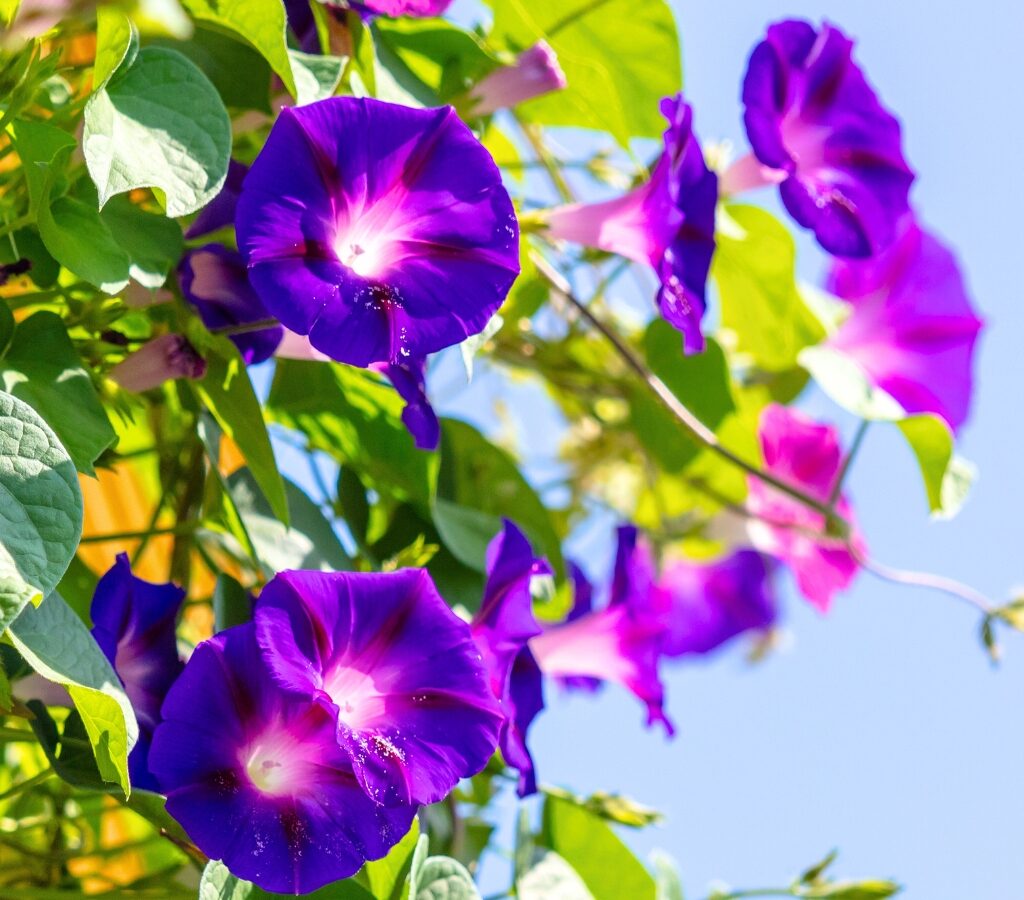
While circadian rhythms form the internal basis for Morning Glory behavior, external environmental factors play a crucial supporting role.
Light
Light is the primary trigger for Morning Glory flowers to open. As dawn approaches, increasing light intensity signals the flower’s petal cells to expand, allowing the bloom to unfurl.
Why light matters:
- Morning Glories are highly sensitive to blue wavelengths in morning light.
- Photoreceptor cells detect light changes and signal petal cells to adjust.
- Darkness or overcast conditions can delay opening or reduce bloom duration.
Temperature
Temperature fluctuations between night and morning also affect flower behavior.
How temperature affects blooms:
- Cool morning temperatures enhance petal cell turgor (firmness), promoting flower opening.
- Rising midday heat causes petal cells to lose water pressure (turgidity), leading to wilting or closing.
In hot climates, blooms may close as early as mid-morning to avoid heat stress and water loss.
Humidity
Humidity impacts how long flowers remain open.
Why humidity matters:
- Higher humidity levels in early morning support cell expansion and delay wilting.
- Dry afternoon air accelerates moisture loss, causing flowers to close sooner.
Why Do Morning Glories Close in the Afternoon?
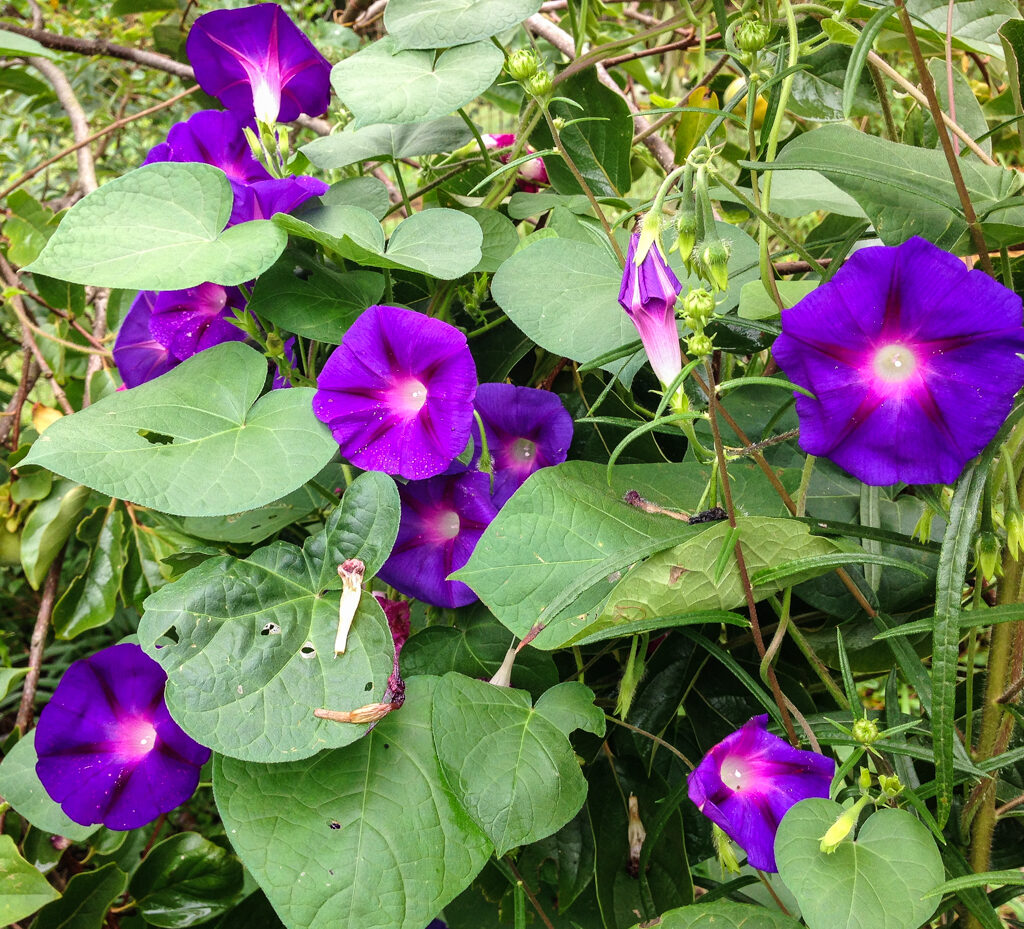
While their dramatic morning display is captivating, Morning Glories’ habit of closing by midday serves an adaptive, ecological purpose:
Protection from Heat and Desiccation
Morning Glory flowers are delicate and prone to heat damage. By closing during the hottest part of the day:
- They reduce water loss through evaporation.
- They protect sensitive reproductive structures (stamens and pistils) from heat damage and sun exposure.
Optimizing Pollination
Morning Glories attract early-morning pollinators like bees, butterflies, and hummingbirds. By opening at dawn:
- They synchronize with the active foraging period of pollinators.
- Provide fresh, nectar-rich blooms when these visitors are most abundant.
Once pollination opportunities diminish and temperatures rise, closing the flowers helps conserve plant resources.
Preserving Pollen Viability
High midday temperatures and intense sunlight can quickly degrade pollen. By limiting flower exposure to the morning hours:
- Morning Glories protect pollen from heat-related sterility.
- Increase the chances of successful fertilization.
How Long Do Morning Glory Blooms Last?
Individual Morning Glory flowers are short-lived — typically lasting one morning before wilting and falling by afternoon. However, since the plant produces new flowers daily throughout the growing season, the display appears continuous.
Can You Extend Morning Glory Blooming Hours?
While you can’t dramatically alter their natural diurnal cycle, you can encourage longer-lasting blooms with good cultural care:
- Provide consistent water — Morning Glories prefer moist, well-drained soil.
- Plant in a location with morning sun and partial afternoon shade to prolong bloom life.
- Avoid excessive fertilization, which can encourage foliage over flowers.
- Choose certain cultivars (like Ipomoea indica) known for slightly longer blooming windows.
Fun Fact: Moonflowers — Morning Glory’s Nocturnal Cousins
Interestingly, Moonflowers (Ipomoea alba) — a close relative of Morning Glories — exhibit the opposite behavior. These large, white, night-blooming flowers open at dusk and close by sunrise, attracting nocturnal pollinators like moths.
This contrast beautifully illustrates how plant species have evolved blooming times to suit their unique ecological niches.
Conclusion
The charming morning ritual of the Morning Glory is a beautiful example of nature’s intricate biological rhythms and adaptive strategies. Guided by circadian rhythms, sensitive to light, temperature, and humidity, these cheerful blooms open at dawn to attract pollinators and gracefully close by midday to conserve moisture and protect their reproductive structures.
While individual flowers are fleeting, the plant’s steady production of blooms ensures your garden enjoys an ever-changing tapestry of color through the growing season. Morning Glories teach us that sometimes the simplest pleasures — like a flower greeting the morning sun — are rooted in wonderfully complex natural processes.
So next time you admire a Morning Glory’s fleeting bloom, you’ll appreciate not just its beauty, but the elegant science behind its delicate daily performance.




Leave A Comment